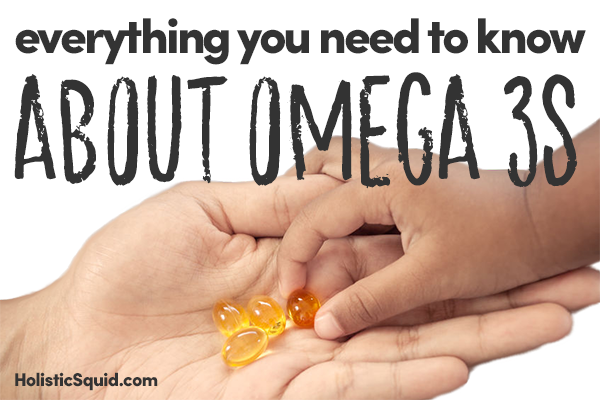
Omega 3s are everywhere… In the news, in your eggs, even in your trail mix.
There's no question that this nutrient plays a crucial role in human health, but choosing the right omega 3 sources for your family can be mind-boggling. What's best – fish oil or flax oil? DHA or EPA? Food or pill?
Here's a guide on why you need this supplement and the best ways for your family to get it.
The health benefits of omega 3s
Omega 3s are essential to all human beings, meaning that they must be acquired through food. Your body cannot make them. In particular, they are important for:
Fertility:
- Improve hormone functioning
- Increase blood flow to reproductive organs
- Soothe the nervous system to address the effects of stress on fertility
- Improve sperm and egg quality when taken for a minimum of 3 months
- Prevent erectile dysfunction
Pregnancy:
- Promote the healthy development of the fetus' brain
- Reduce the risk of pregnancy-induced hypertension
- Reduce the risk of gestational diabetes
- Reduce inflammation associated with pain and discomfort
- Manage stress to keep mom and baby healthy
Children:
- Support neurological function and brain development
- Increase the ability to concentrate on school work
- Significantly reduce symptoms of ADHD, autism and other developmental/behavioral disorders
- Improve skin conditions such as eczema, acne, cradle cap.
- Resolve inflammatory conditions including allergies, asthma, digestive irritation, etc.
Overall health:
- Heart disease
- Digestive conditions such as Crohn's disease, ulcerative colitis and IBS
- Immune support and immune-compromised conditions
- Respiratory conditions
- Pain of various presentations and origins
- Hormone imbalance related to PMS and menopause
- Depression, anxiety, insomnia and other mental health disorders
- Skin and hair health
How to understand omega 3s, 6s, and 9s
Omega 3, 6, and 9s are three major types of fatty acids needed for human health.
Most modern diets don't tend to include enough of the foods that are rich in omega 3s, but contain far too much omega 6s and 9s. You can find the most omega 3s in seafood based supplements, such as fatty fish oils, squid oil, and krill oil. Omega 6s are present in common vegetable oils and other popular food products, and omega 9s are found in animal fats as well as vegetable oils.
It's important to consume omega 3s, 6s, and 9s in the right proportions.
While omega 3s tend to have an anti-inflammatory effect, omega 6s actually boost the inflammatory process. Some exceptions to this rule include the fatty acid known as GLA, which you can find in evening primrose oil. When the omega 3 / omega6 ratio is out of balance, inflammation runs rampant in the body and a host of health issues can result.
The recommended ratio of omega 6's to 3's should be between 2:1 and 4:1. Instead, most people are consuming them in proportions between 10:1 and 30:1.
Omega 3s food sources and supplements
Omega-3 supplements are especially important for vegetarians, kids who are picky eaters, and others who don't regularly consume food sources of omega 3s. Usually I prefer when my patients get nutrients from food whenever possible, but due to the potential mercury contamination in fish, high quality omega 3 supplements usually a safer option than food sources.
Up until recently, I've recommended fish or cod liver oil for nearly all of my patients for the many benefits of the omega 3's which are superior to plant based sources since they include both DHA and EPA.
The newcomer to the omega 3 market is krill oil which appears to be a superior choice both nutritionally and environmentally compared to fish oil.
Fish Oil supplements for omega 3s
Fish oil is an excellent sources of omega 3s, and cod liver oil provides the same fatty acids, but also contains vitamins D and A.
Vitamin D is naturally processed by the body when exposed to sunshine, and Vitamin D deficiency is linked with childhood illnesses such as diabetes, asthma and autism. Cod liver oil may be a good option in the winter months when sunlight is at a minimum.
For children, there are several great options of fruit flavored chewable fish oils. Parents of infants can add liquid fish oil to baby' bottles or use an medicine dropper to gently squirt into baby's mouth.
High quality cod liver and fish oils allow you to consume omega 3s without risk of exposure to toxins found in many fresh fish. In some people, fish oil causes stomach upset, “fish burps,” or fish breath. Sometimes flavored fish oil may help eliminate these side effects, but krill oil may be an even better answer to this concern.
Krill oil for omega 3
Krill oil is made from krill, small crustaceans that live in cold ocean areas. Krill oil is a rich source of Omega 3s, and it also contains vitamins E, A, D and a natural antioxidant called astaxanthin.
Combined with plankton, krill make up the earth's largest biomass. As the most renewable food source known today, krill oil is a much more environmentally friendly option than oil harvested from cod or other large fish.
There are several more advantages to krill oil over fish oil. Krill is:
- Easier to digest-doesn't produce a fishy after-taste
- 48 times more potent as an antioxidant
- Less likely to be contaminated with toxins
- Less likely to go rancid quickly
- A protector against skin damage from UV exposure as it contains astaxanthin
Despite its extra cost, the health benefits and low level of impact on the environment make krill oil an excellent choice for adults and children at all stages of life.
Get my favorite krill oil here.
Options for vegetarians
Vegetarian options for omega 3s include flax, hemp, walnut. These sources contain ALA which some individuals can convert to DHA and EPA. Note: genetics matters here. Not everyone will be able to efficiently convert ALA into usable long-chain omega 3s.
Some supplements that source DHA from algae can be a reliable source of omega 3s for folks who are allergic or not willing to consume fish oil.
Get vegan and vegetarian algal oil here.
Cold pressing is crucial
Regardless of the source omega 3s you prefer, be sure to choose oils that are cold-press processed.
This technique preserves nutritional value, purity, color and flavor of oils. Cold pressed methods yield less oil than higher heat methods, resulting in pricier oils but also higher quality and optimum nutritional value.



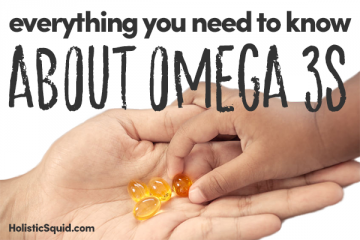
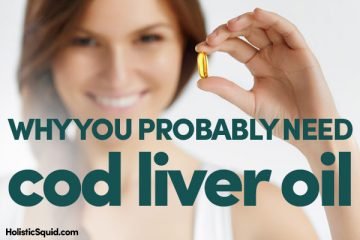



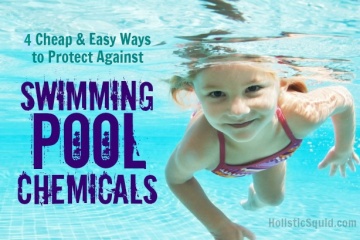
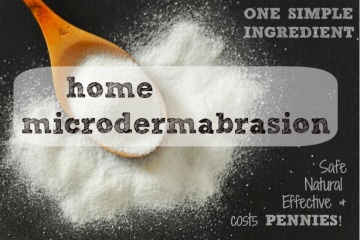

So, what are the recommended doses for children and adults? Are there different ideal dosages in summer (more sunshine) vs. winter?
Great article! I have been wondering about krill oil versus cod liver oil. What exactly is the proper ratio of vitamin A to D?
Also, any recommended brands?
Hi Caroline, thanks for your question. The proper ratio of A to D is 5:1. You can read more about FCLO here:
http://holisticsquid.com/benefits-of-fermented-cod-liver-oil/
If you eat adequate vitamin A sources (especially liver), krill may be a better choice in the summer due to the specific anti-oxidant, sun protective qualities of krill.
I noticed when taking omega 3’s that my memory got better. I suppose that is due to the fact that our brains love it. I remember my grandma making me take cod liver oil as a kid (I cried). Now I laugh at how low my blood pressure is, and how quick I am in the head as well. For my age (62), you would think I would be slower than mollasses uphill but nay! Thanks for the great post.
Keturah :)))
Emily, I see that this is not a new post so I am wondering if you still feel that the Green Pastures FCLO is still the best supplement for children? Thanks so much for time and help!
Hi Joelle, thanks for asking. My kids take Green Pastures FCLO – this one mixed with elderberry: http://amzn.to/1cwo8Pe.
Hello Emily! I was wondering what you think about the amount of EPA/DHA children should be taking? I know you recommend Green Pastures FCLO and I take that, but no matter what I do I cannot get my children to take it. They will take Nordic Naturals Children’s DHA made from Artic Cod Livers, but I was wondering about the correct amounts to give to them. They just seem to be low to me. I understand too that this may not be the best brand. I have a 2 year old, 5 year old, and 7 year old and just think that I should be giving them all different amounts based on age. They are all picky eaters to different degrees so I’m trying my best to at least supplement some things for them. NN’s EPA/DHA amount is 82mg/125mg for 4 soft gels. I really respect your knowledge on things like this since it is so hard to find the correct information out there. Thanks so much!
Hi Misti, thanks for the comment and the question. Here are two posts that might help: http://holisticsquid.com/how-much-cod-liver-oil-do-i-need/ and holisticsquid.com/tricks-for-taking-fermented-cod-liver-oil/.